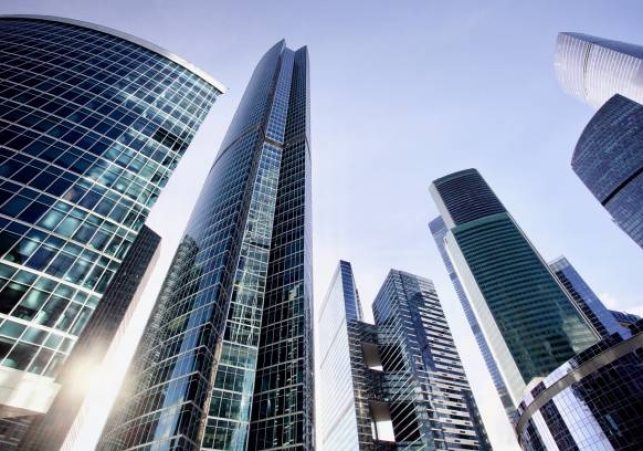Commercial real estate

Commercial real estate (CRE) stands as a cornerstone of economic activity, encompassing a diverse array of property types including office buildings, retail centers, industrial facilities, and multifamily residences. This dynamic sector is influenced by various factors ranging from economic conditions to technological advancements, shaping trends and presenting both challenges and opportunities for investors, developers, and tenants alike. In this discourse, we delve into the multifaceted realm of commercial real estate, exploring its current landscape, emerging trends, key challenges, and promising opportunities.
Understanding the Landscape: Commercial real estate is deeply intertwined with broader economic trends, reflecting the pulse of business activity, consumer behavior, and investor sentiment. The performance of CRE assets is closely linked to economic indicators such as GDP growth, employment figures, and interest rates. For instance, a robust economy typically spurs demand for office space, retail properties, and industrial facilities as businesses expand operations and consumers increase spending.
However, the commercial real estate landscape is not immune to cyclical fluctuations and disruptive forces. The COVID-19 pandemic, for instance, triggered seismic shifts in CRE dynamics, accelerating trends such as remote work, e-commerce adoption, and the repurposing of retail spaces. These changes have reshaped market dynamics and forced stakeholders to adapt swiftly to new realities.
Emerging Trends:
-
Remote Work Revolution: The widespread adoption of remote work has redefined office space requirements, with companies reassessing their spatial needs and embracing flexible work arrangements. This trend has implications for office leasing dynamics, influencing demand patterns and driving the evolution of coworking and flexible office space models.
-
E-commerce Reshaping Retail: The relentless rise of e-commerce has disrupted traditional retail paradigms, compelling landlords to reimagine the use of retail spaces. From experiential retail concepts to last-mile delivery hubs, innovative strategies are being deployed to enhance the viability and relevance of brick-and-mortar retail properties.
-
Industrial and Logistics Boom: The surge in e-commerce activity has fueled demand for industrial and logistics properties, underpinning the growth of distribution centers, fulfillment hubs, and warehouse facilities. The rise of omnichannel retailing and expedited delivery services has propelled the expansion of industrial real estate portfolios, with investors eyeing lucrative opportunities in this sector.
Challenges Facing the Industry:
-
Economic Uncertainty: Despite signs of recovery, economic uncertainty persists, posing challenges for CRE investors and developers. Fluctuations in interest rates, inflationary pressures, and geopolitical risks can impact investment decisions and project feasibility, necessitating vigilant risk management strategies.
-
Sustainability Imperative: The imperative to address environmental sustainability concerns is reshaping the CRE landscape, with stakeholders increasingly prioritizing energy efficiency, green building certifications, and sustainable development practices. Compliance with regulatory mandates and investor expectations necessitates integration of sustainability principles into property management and investment strategies.
-
Technological Disruption: Rapid technological advancements are reshaping tenant expectations, property management practices, and asset valuation methodologies. From smart building technologies to data analytics and artificial intelligence, CRE stakeholders must embrace innovation to enhance operational efficiency, tenant experiences, and asset performance.
Opportunities on the Horizon:
-
Adaptive Reuse and Redevelopment: The repurposing of underutilized or obsolete properties presents compelling investment opportunities, particularly in urban areas facing revitalization efforts. Adaptive reuse projects such as converting vacant office buildings into mixed-use developments or transforming obsolete industrial sites into vibrant cultural hubs can unlock significant value and contribute to urban renewal.
-
Alternative Asset Classes: The quest for diversification and yield enhancement is driving interest in alternative asset classes within the CRE universe. From student housing and senior living facilities to data centers and self-storage facilities, niche sectors offer investors exposure to non-traditional revenue streams and resilient demand drivers.
-
Value-Add Strategies: Value-add investing strategies entail acquiring underperforming assets and implementing targeted improvements to enhance their income-generating potential. Whether through cosmetic upgrades, operational efficiencies, or tenant enhancements, value-add opportunities abound across various property types, offering investors the prospect of attractive risk-adjusted returns.
Conclusion: Commercial real estate remains a dynamic and resilient asset class, shaped by evolving economic, technological, and societal forces. While navigating the complexities of the CRE landscape entails inherent challenges, astute investors and developers stand to capitalize on emerging trends and seize lucrative opportunities. By embracing innovation, sustainability, and adaptive strategies, stakeholders can position themselves for success in an ever-evolving marketplace characterized by change and opportunity.
